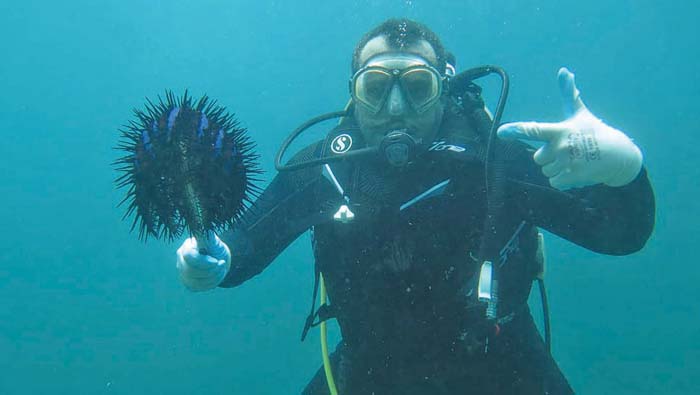
Muscat: The Ministry of Environment and Climate Affairs recently carried out a two-day-long exercise to protect the coral reef in Daymaniyat Islands Reserve.
Divers working for the ministry dived deep and removed the “Crown-of-Thorns Star Fish” from the bottom of the sea because the species eats the coral reef. The ministry disclosed this information on its official Twitter handle.
“As a part of the Ministry of Environment and Climate Affairs’ efforts to monitor the state of coral reefs and to protect them from human and natural impact, a campaign to remove the Crown-of-Thorns Star Fish was carried out in the Daymaniyat Islands Reserve. This is where it is widespread and affects the health and life of coral reefs.”
“The campaign lasted two days with the participation of specialists from the Department of Marine Environment Conservation and the Department of Environment and Climate Affairs in the province and logistical support from the Oman Navigation Company,” the ministry tweeted.
Fareed Saud Al Abdali, technical supervisor of Marine Science and Fisheries department at Sultan Qaboos University (SQU), said that Daymaniyat islands were more affected by the menace than other tropical waters near Oman.
“This species of star fish is found everywhere in tropical waters where corals are found, but there has been an outbreak of the Crown-of-Thorns Star Fish in and around Daymaniyat islands in recent years. It has flourished in the past 10 years. This species is harming the coral reef by eating it.”
“The issue is that there are no natural predators that feed on this particular species of star fish. Snails, for example, are not observed in these parts,” he said.
The professor remarked that the species was venomous, adding that removal of the species from the sea would have been difficult to do.
He said that discarded fishing nets, among other issues, posed a threat to the coral reef.
“Daymaniyat is a special place. Fishing nets being discarded inside the sea are a problem. Apart from this, tourism can also pose a threat, but if it is done responsibly, there should not be any problem. However, many more studies are required to be able to explain what issues Daymaniyat faces and steps to be taken to conserve it. One has to realise that Daymaniyat is not just the coral reef. The boundaries of the reserve extend beyond that,” he addded.